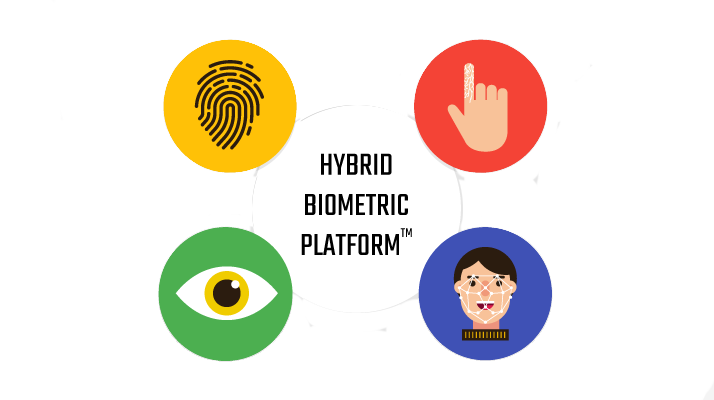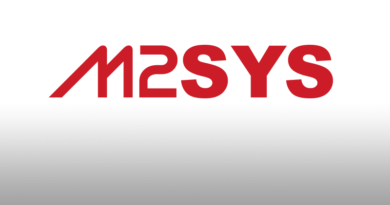The Advantages of Multimodal Biometric Systems for Human Identification
As the technology world evolves, challenges to implement secure personal identification protocols with biometric technology are increasing and the need for accurate human identification is higher than ever in just about every market across the world. Parallel evolution of the biometric identification management market has identified that use of a single hardware modality for identification purposes may no longer be the most intelligent choice for many industries. Single modality biometric systems have to contend with a variety of problems such as noisy data, intra class variations, non-universality, spoof attacks, and distinctiveness. Some of these limitations can be addressed by deploying multimodal biometric systems that integrate multiple biometric modalities in a single scan to alleviate the challenges of a uni modal system.
What is multi-modal biometric technology?
Multi-modal biometrics are systems that are capable of using more than one physiological or behavioral characteristic for enrollment, verification, and identification. Human identification based on multi-modal biometrics is becoming an emerging trend, and one of the most important reasons to combine different modalities is to improve recognition accuracy. There are additional reasons to combine two or more biometrics such as the fact that different biometric modalities might be more appropriate for unique deployment scenarios or when security is of vital importance to protect sensitive data.
How does a multi-modal biometric system work?
Multi-modal biometric systems take input from single or multiple biometric devices for measurement of two or more different biometric characteristics. For example, a multi-modal system combining fingerprint and finger vein characteristics for biometric recognition would be considered a “multi-modal” system regardless of whether fingerprint and finger vein images were captured by different or the same biometric devices. It is not a requirement that the various measures be mathematically combined in any way because biometric traits remains independent from each other, which results in higher accuracy when identifying a person.
Why do we need multi-modal biometric systems for human identification?
Every biometric system identifies a person by who the person is rather than what the person carries, unlike most traditional authorization systems such as personal identification numbers (PINs), passwords, or ID cards. Unlike these solutions that rely on “what you have,” biometric credentials cannot be lost, forgotten, guessed, or easily cloned. Despite these advantages, the technology has some limitations too:
- Environment: The environment in which biometric data is captured may have an effect on the ability of the system to identify an individual. For example, the accuracy of facial recognition is affected by illumination, pose, and facial expression.
- Noise in sensed data: A fingerprint with a scar and voice altered by a cold are examples of noisy inputs. Noisy data could also result from defective or improperly maintained sensors.
- Intra-class variations: Fingerprint data acquired from an individual during authentication may be very different from data used to generate the template during enrollment due to a misplacement of the finger on a capture device, thereby affecting the matching process.
- Non-universality: Some people cannot physically provide a standalone biometric credential due to illness or disabilities.
- Spoof attacks: An impostor may attempt to spoof the biometric trait of a legitimately enrolled user in order to circumvent the system.
In each of these scenarios, a unimodal biometric system captures and matches only one biometric trait resulting in an absence of sustainable ways to solve these problems. Some of the limitations imposed by unimodal biometric systems can be overcome by using multiple biometric modalities. Such systems, known as multi-modal biometric systems, are expected to be more reliable due to the presence of multiple, independent biometric traits. Implementing a multi-modal biometric identification management system offers these additional benefits:
- The accuracy of identifying a person increases significantly when multi-modal biometrics are used. It’s highly unexpected that, multiple forms of biometrics will be affected by the aforementioned conditions in which it has been captured.
- The same concept applies to noisy data and intra-class variations that can be rectified with through the use of multiple biometric data credentials for authentication.
- Multi-modal biometric systems address the problem of non-universality, since capturing multiple biometric traits can ensure sufficient population coverage.
- Multi-modal biometric systems provide anti-spoofing measures by making it difficult for an intruder to simultaneously spoof the multiple biometric traits of a legitimate user.
What are the advantages of a multi-modal biometric system from a business perspective?
From a business perspective, the advantages of multi-modal biometric system include:
- Accuracy: Multi-modal biometric uses multiple modalities to identify a person which ensures higher accuracy.
- Security: Multi-modal biometric systems increase the level of security by eliminating any chance of spoofing. It is unlikely that a person would be able to spoof multiple types of biometric traits at once.
- Liveness Detection: Multi-modal biometric systems ask end users to submit multiple biometric traits randomly which ensures strong liveness detection to protect from spoofing or hackers.
- Universality: A multimodal biometric system is universal in nature, even if a person is unable to provide a form of biometric due to disability or illness, the system can take other form of biometric for authentication.
- Cost-effective: Multimodal biometric systems are cost effective by providing higher levels of security to lessen the risk of breaches or criminal attacks.
Conclusion
As we can see from the above analysis, multi-modal biometrics are actually a fusion of unimodal biometrics designed to overcome the problems a single modality may cause such as noisy data, interclass similarities, intra class variation, non-universality, and spoofing. To date, many multi-modal biometric systems have been designed for individual authentication but not all are suitable for every environment. There is no one-size-fits-all solution, ultimately the selection of appropriate modalities, the choice of acceptable fusion levels, and redundancy in extracted features are some of the vital features to ensure the success of a multi-modal biometric system for human identification.












